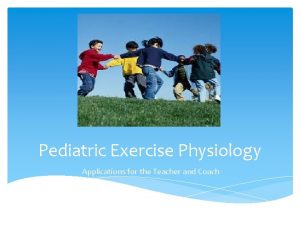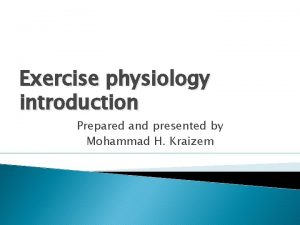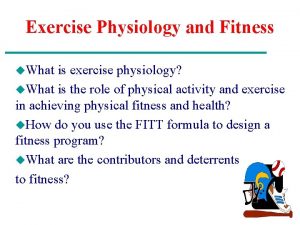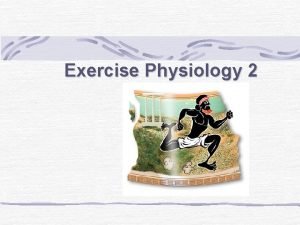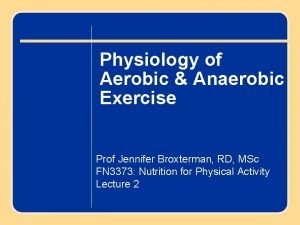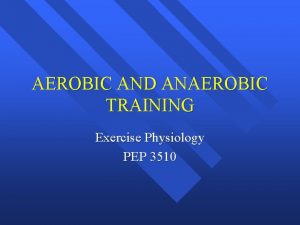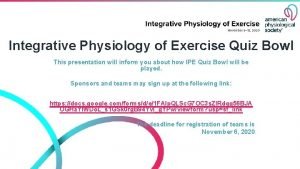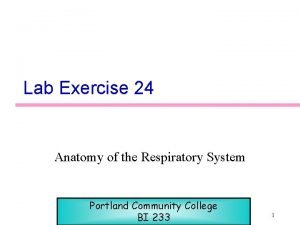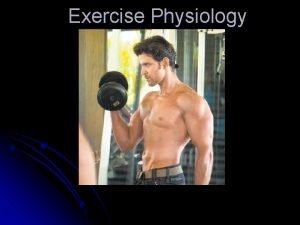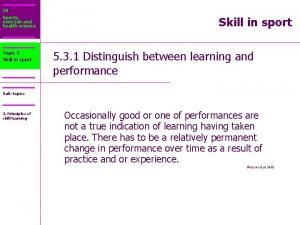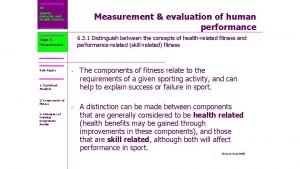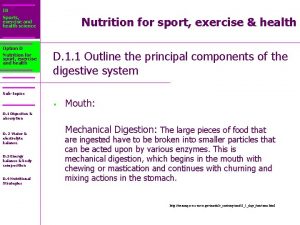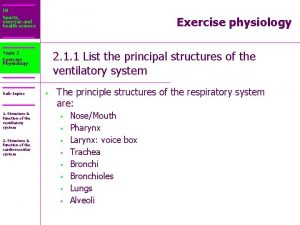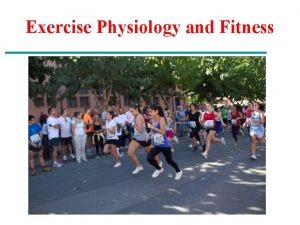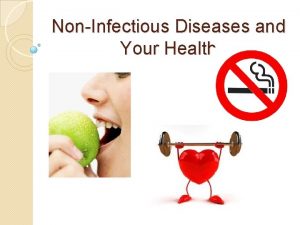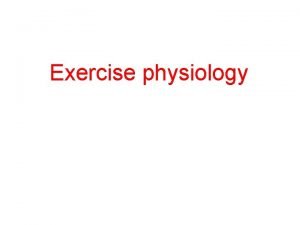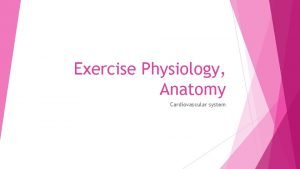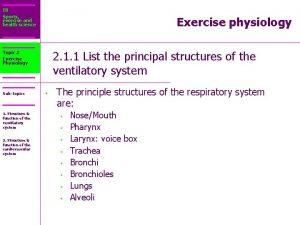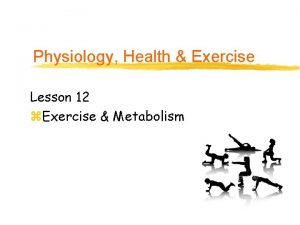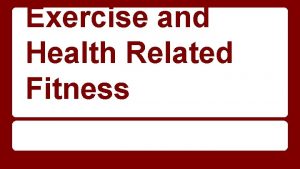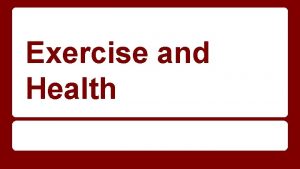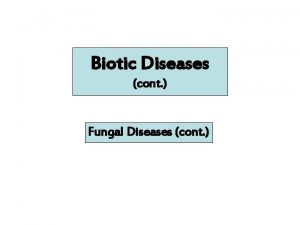Physiology Health Exercise z Physiology and diseases of
















- Slides: 16

Physiology, Health & Exercise z Physiology and diseases of the cardiovascular system z. Energy balance and obesity z. Pathophysiology of Diabetes Mellitus z. Pathophysiology of Osteoporosis

Introduction z Exercise has wide ranging effects on the body and the mind. z In particular, it can reduce your risk of major diseases such as coronary heart disease (CHD), stroke, obesity, Diabetes Mellitus and Osteoporosis. z An active lifestyle will not only reduce your risk of developing these diseases but also give you a sense of well being and confidence. 2

Structure & Function of the cardiovascular system z The heart is the central organ of the CVS pumping blood to the lungs and the other tissues of the body. z The primary purpose is to move substances around the body z The blood can only reach these tissues by passing through blood vessels, the other vital component of the CVS. z The CVS supplies all the cells of the body with nutrient and oxygen-rich blood and removes carbon dioxide which would otherwise kill cells. 3

Heart Structure z 4 chambers z Atria at top z Ventricles at bottom z Muscular pump composed of cardiac muscle z Can beat without input from the nervous system 4

Heart Structure z The cardiovascular system is closed as blood is transported within blood vessels. z It is also described as a double circulatory system because in one complete circulation of the body blood goes through the heart twice. z The left ventricle wall of the heart is thicker than the right as it is pumping blood around the whole body compared to only the lungs. 5

Heart Structure z Having a double circulation reduces the time taken for the blood to circulate the whole body and allows mammals to have a higher basal metabolic rate (BMR) z The right side (RA) of the heart receives deoxygenated blood from the body and it passes it to the lungs to be oxygenated. z The left side (LA) receives oxygenated blood from the lungs and passes it to the rest of the body. 6

7

8

9

Pulmonary circuit Pulmonary artery RV Pulmonary vein lungs LA 10

Systemic Circuit Major organs Aorta LV Vena Cava RA 11

Valves of the Heart z The valves between the atria and ventricles are known as atrio-ventricular valves (AV valves) as they prevent the back flow of blood into the atria when the ventricles contract. z Between RA & RV- tricuspid valve (3 flaps) z Between LA & LV- bicuspid valve (2 flaps)- also called mitral valve 12

Valves of the Heart z The semi-lunar valves are found at the origins of the pulmonary artery and aorta. z Between RV and pulmonary artery- pulmonary valve z Between LV and aorta- aortic valve z Open when ventricles contract to allow blood flow into the arteries z Close when arterial pressure falls to prevent blood flowing back into the ventricles when they relax. 13

Valves of the Heart z The heart valves closing cause the lub-dub sound heard with a stethoscope z A “heart murmur”“sloshing sound” as valves not closing properly 14

15

Heart Dissection z Heart dissection 16
 Exercise physiology for health, fitness, and performance
Exercise physiology for health, fitness, and performance Chapter 21 mental health diseases and disorders
Chapter 21 mental health diseases and disorders Physiology of sport and exercise 5th edition
Physiology of sport and exercise 5th edition Pediatric exercise physiology
Pediatric exercise physiology Define exercise physiology
Define exercise physiology Fitness u
Fitness u 2 types of exercise
2 types of exercise Uk myeloma forum
Uk myeloma forum Exercise intro chapter 1
Exercise intro chapter 1 Pep 3510a
Pep 3510a Exercise physiology quiz
Exercise physiology quiz Bronchial tree
Bronchial tree Map co x tpr
Map co x tpr Ib sports exercise and health science notes
Ib sports exercise and health science notes Ib sports exercise and health science
Ib sports exercise and health science Sports
Sports Ib sport exercise and health science
Ib sport exercise and health science



